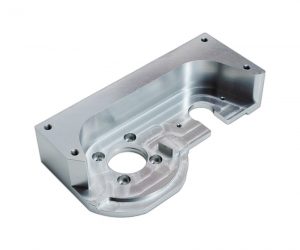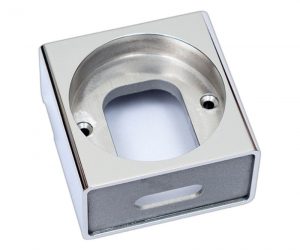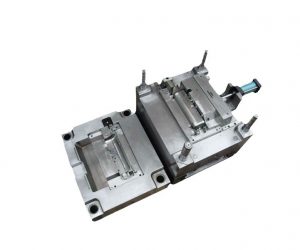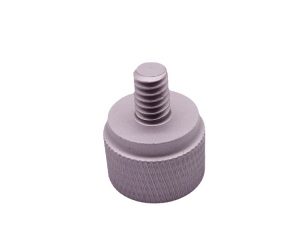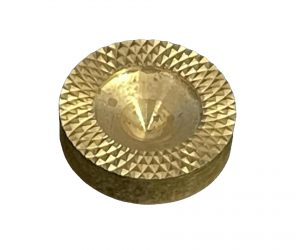Injection molding is a widely used manufacturing process where plastic pellets are melted and injected into molds to create a variety of products. This process operates at high temperatures, pressures, and speeds, all of which pose significant risks to workers. To minimize these hazards and ensure worker safety, the use of appropriate Personal Protective Equipment (PPE) is crucial.
Why PPE is Essential in Injection Molding
High Temperatures and Burn Risks
The process of injection molding requires the plastic to be melted at extremely high temperatures. If workers do not wear the proper PPE, they are at risk of burns from hot equipment, molds, or molten plastic. To mitigate this risk, workers should wear heat-resistant gloves, long-sleeved shirts, and trousers. These protective clothing items shield the body from intense heat, preventing burn injuries that can occur during routine operations.
High Pressure and Electrical Hazards
Injection molding machines also operate under high pressures, which can create dangers from pressurized equipment or potential electrical hazards. If PPE is not properly worn, workers may suffer injuries from equipment malfunctions or electrical shocks. Essential protective gear includes pressure-resistant clothing and safety shoes to protect against heavy machinery and electrical hazards, ensuring comprehensive protection during operation.
High-Speed Moving Parts and Flying Debris
During injection molding, machines operate at high speeds, and moving parts or flying debris can cause significant injuries. The rotating components of the machine and mold handling equipment pose a particular risk. To prevent eye and ear damage, workers must wear safety glasses to protect against flying debris, and earplugs or earmuffs to shield hearing from the loud operational noise. These safety items are essential to prevent both acute injuries and long-term hearing damage.
Comprehensive PPE for Injection Molding
PPE is defined as any clothing or device designed to protect the wearer from injury or illness. In the context of injection molding, the appropriate PPE depends on the specific hazards present in the environment, such as heat, noise, moving machinery, chemical exposure, and flying debris.
Here are some common types of PPE used in injection molding:
1. Gloves
Gloves provide essential protection for the hands, guarding against burns, cuts, and abrasions. For injection molding, gloves should be made from heat-resistant materials like leather or Kevlar to provide protection from molten plastic and sharp edges. They should also be puncture-resistant, fit snugly, and allow sufficient dexterity for handling equipment safely.
2. Goggles
Safety goggles protect the eyes from flying debris, splashes from molten plastic, and UV radiation from the machine. They should be impact-resistant and equipped with anti-fog and anti-scratch coatings to ensure clear vision in the high-temperature environment of the injection molding area. A snug fit is crucial to provide complete eye protection.
3. Helmets
For head protection, workers should wear industrial helmets to safeguard against falling objects or impacts from machinery. The helmet should be sturdy, have a chin strap, and come with a visor for face protection. The helmet should also include ventilation holes and padding to ensure comfort during prolonged use.
4. Earplugs/Earmuffs
Given the high noise levels in an injection molding environment, ear protection is essential. Earplugs or earmuffs should be worn to prevent noise-induced hearing loss. These should be made of soft, flexible materials like foam or silicone, designed to fit snugly in the ear canal and effectively block out harmful noise.
5. Respirators
Workers are often exposed to dust, fumes, and vapors generated during the injection molding process, which can be hazardous to lung health. Respirators equipped with appropriate filters help protect the lungs from inhaling harmful contaminants. The respirator should be NIOSH-certified, with filters suitable for the specific pollutants, and must fit tightly to prevent air leakage.
6. Aprons
Flame-retardant aprons provide protection from spills, splashes, and burns. Made from chemical-resistant materials like rubber or PVC, aprons should cover the chest, abdomen, and legs to safeguard the worker from direct exposure to molten plastic and other hazardous materials used in the process.
7. Boots
To protect the feet from crush injuries, slips, and falls, workers should wear steel-toe boots made of durable, non-slip materials like leather. These boots should provide ankle support and have a treaded sole to prevent accidents caused by slipping on wet or oily surfaces.
Safety Best Practices: PPE Alone Isn’t Enough
While PPE plays a vital role in protecting workers, it should not be seen as the only line of defense. Several other safety measures should be followed to ensure a safe working environment:
- Proper Training: Workers must be properly trained in the safe operation of injection molding machines, including how to respond to emergencies.
- Machine Maintenance: Regular maintenance and inspection of injection molding machines are necessary to identify potential issues before they become safety hazards.
- Workplace Hazards Assessment: Supervisors should regularly assess the work environment to identify new or evolving hazards and update safety protocols as needed.
- Reporting: Workers should immediately report any potential hazards, machine malfunctions, or safety incidents to their supervisors to prevent accidents.
Conclusion: Prioritizing Worker Safety in Injection Molding
The injection molding process, though efficient and widely used, presents multiple hazards due to high temperatures, pressures, and the operation of high-speed machinery. To minimize the risks of burns, electrical shocks, eye injuries, and hearing damage, workers must wear the appropriate personal protective equipment (PPE), including gloves, goggles, helmets, respirators, and boots. By combining the proper PPE with strict safety procedures, regular maintenance, and employee training, manufacturers can protect their workers from injury and ensure a safer workplace.
PPE is essential for protecting workers from the numerous risks present in the injection molding process, but it should be viewed as part of a broader safety strategy that includes proper training, machine maintenance, and hazard prevention protocols. Only by addressing all these factors can a company ensure both the safety of its workers and the quality of its products.
What is Injection Molding?
Injection molding is a manufacturing process that produces plastic parts by melting plastic pellets and injecting them into a mold. The mold consists of two halves that are clamped together and cooled to solidify the plastic material. The mold can have complex shapes and features to create various products, such as toys, containers, medical devices, and automotive parts.
Injection molding machines can be classified into two types: horizontal and vertical. Horizontal machines have the mold mounted horizontally, while vertical machines have the mold mounted vertically. Horizontal machines are more common and can accommodate larger molds and parts. Vertical machines are more suitable for smaller molds and parts, and can also allow for insert molding, where a metal or plastic part is inserted into the mold before injection.
Injection molding is a popular and efficient method of producing plastic parts because it can produce high volumes of parts with consistent quality and low waste. However, it also involves high temperatures, high-pressure hydraulic circuits, and hazardous fumes that can pose a risk to operators and machines. Therefore, it is essential to follow safety precautions and use appropriate personal protective equipment (PPE) when working with injection molding machines.
What are the Hazards of Injection Molding?
Injection molding involves mechanical and thermal hazards that can cause burns, crushes, impacts, and other injuries to operators. Some of the potential hazard areas of injection molding machines are:
- Mold area: This is where the mold halves are clamped together and where the plastic material is injected and cooled. The mold area can be hot, sharp, or moving, and can cause burns, cuts, or pinches if touched or contacted by operators.
- Clamping mechanism area: This is where the hydraulic or mechanical system applies force to close and open the mold halves. The clamping mechanism area can have high-pressure hoses, valves, cylinders, or levers that can leak, burst, or move unexpectedly, and can cause impacts or crushes if contacted by operators.
- Core and ejector drive mechanism areas: These are where the mechanical devices move the core or ejector pins inside the mold to create features or eject parts. The core and ejector drive mechanism areas can have springs, gears, cams, or rods that can move rapidly or unpredictably, and can cause impacts or pinches if contacted by operators.
- Nozzle area: This is where the molten plastic material flows from the injection unit to the mold. The nozzle area can be extremely hot (up to 400°C) and under high pressure (up to 2000 bar), and can cause severe burns or injections if touched or leaked by operators.
- Injection unit area: This is where the plastic pellets are melted and pressurized by a screw or plunger. The injection unit area can have heater bands, heat sources, barrels, screws, plungers, or hoppers that can be hot, sharp, or moving, and can cause burns, cuts, or impacts if touched or contacted by operators.
- Feed hopper/opening area: This is where the plastic pellets are fed into the injection unit. The feed hopper/opening area can have rotating blades, fans, magnets, or sensors that can be sharp or moving,
and can cause cuts or impacts if touched or contacted by operators. - Heater bands/heat source areas: These are where the electric heaters or heat sources are attached to the injection unit or nozzle to heat up the plastic material. The heater bands/heat source areas can be very hot (up to 500°C) and under high voltage (up to 480 V), and can cause electric shocks or burns if touched or contacted by operators.
- Parts discharge area: This is where the finished parts are ejected from the mold and collected by a onveyor belt or bin. The parts discharge area can have moving belts, bins, or parts that can be hot, sharp, or heavy, and can cause burns, cuts, or impacts if touched or contacted by operators.
- Hoses and manifolds in/around the machine: These are where the hydraulic or pneumatic hoses or manifolds connect the machine components or systems. The hoses and manifolds in/around the machine can have high-pressure fluids or gases that can leak, burst, or spray, and can cause impacts, injections, or asphyxiation if contacted by operators.
- Inside the guard and outside mold areas: These are where the machine components or systems are located inside the guard or outside the mold. The inside the guard and outside mold areas can have electrical wires, circuits, switches, or sensors that can be under high voltage (up to 480 V) and can cause electric shocks if touched or contacted by operators.
- Part insert and removal areas: These are where the metal or plastic parts are inserted into or removed from the mold before or after injection. The part insert and removal areas can have hot, sharp, or heavy parts that can cause burns, cuts, or impacts if touched or contacted by operators.
In addition to mechanical and thermal hazards, injection molding can also involve electrical and other hazards, such as:
- Electromagnetic component disturbances: These are where the electromagnetic components of the machine, such as motors, solenoids, or transformers, can interfere with other devices or systems, such as pacemakers, hearing aids, or fire alarms. Electromagnetic component disturbances can cause malfunctioning or damage to these devices or systems if they are near the machine.
- Stored/residual energy areas: These are where the machine components or systems can store energy even after the machine is turned off, such as capacitors, batteries, springs, or hydraulic fluids. Stored/residual energy areas can release energy unexpectedly and cause electric shocks, impacts, or injections if contacted by operators.
- Vapors and gases: These are where the plastic material or additives can emit vapors or gases during melting, injection, or cooling. Vapors and gases can be toxic, flammable, or explosive, and can cause irritation, poisoning, fire, or explosion if inhaled or ignited by operators.
What are the Types of PPE for Injection Molding?
Personal protective equipment (PPE) is a type of equipment that protects workers from hazards by creating a barrier between them and the source of danger. PPE can include clothing, gloves, eyewear, headwear, footwear, or respirators, depending on the type and level of hazard.
The types of PPE for injection molding are:
- Clothing: Clothing is a type of PPE that covers the body and protects it from heat, cold, cuts, or impacts. Clothing for injection molding should be made of flame-resistant, non-melting,
and non-conductive materials, such as cotton, wool, or leather. Clothing for injection molding should also fit well, be comfortable, and allow freedom of movement. Clothing for injection molding should not have loose parts, such as ties, cuffs, or buttons, that can get caught in the machine. Examples of clothing for injection molding are long-sleeved shirts, pants, jackets, or aprons. - Gloves: Gloves are a type of PPE that covers the hands and protects them from heat,
cold, cuts, or impacts. Gloves for injection molding should be made of heat-resistant,
cut-resistant, and non-conductive materials, such as leather, rubber, or Kevlar. Gloves for injection molding should also fit well,
be comfortable, and allow dexterity. Gloves for injection molding should not have loose parts, such as cuffs or fingers that can get caught in the machine. Examples of gloves for injection molding are leather gloves or rubber gloves. - Eyewear: Eyewear is a type of PPE that covers the eyes and protects them from heat
light dust or splashes. Eyewear for injection molding should be made of impact-resistant
and non-conductive materials such as polycarbonate or acrylic. Eyewear for injection molding should also fit well be comfortable and allow visibility. Eyewear for injection molding should not have loose parts such as straps or frames that can get caught in the machine. Examples of eyewear for injection molding are safety glasses or goggles. - Headwear: Headwear is a type of PPE that covers the head and protects it from heat
cold impacts or electric shocks. Headwear for injection molding should be made of flame-resistant
impact-resistant and non-conductive materials such as fiberglass or plastic. Headwear for injection molding should also fit well be comfortable and allow ventilation. Headwear for injection molding should not have loose parts such as straps or brims that can get caught in the machine. Examples of headwear for injection molding are hard hats or helmets.
How to Choose and Use PPE for Injection Molding?
Personal protective equipment (PPE) is essential for workers who are involved in injection molding processes. Injection molding involves high temperatures, pressures, and chemicals that can pose various hazards to the workers' health and safety. Therefore, choosing and using the right PPE is crucial to prevent injuries and illnesses. Here are some tips on how to choose and use PPE for injection molding:
- Choose PPE that is suitable for the specific hazards of the injection molding process. For example, gloves should be resistant to heat and chemicals, eye protection should be able to withstand impact and splashes, and respiratory protection should be able to filter out dust and fumes.
- Choose PPE that fits well and is comfortable to wear. PPE that is too loose or too tight can impair the worker's mobility, vision, or breathing. PPE that is uncomfortable can also cause irritation, fatigue, or distraction. Therefore, workers should try on different sizes and styles of PPE before selecting the best one for them.
- Choose PPE that is easy to maintain and clean. PPE that is dirty or damaged can reduce its effectiveness and increase the risk of infection or contamination. Therefore, workers should inspect their PPE regularly and replace it if it is worn out or defective. Workers should also follow the manufacturer's instructions on how to clean and store their PPE properly.
- Use PPE correctly and consistently. Workers should wear their PPE whenever they are exposed to the hazards of injection molding. They should also follow the proper procedures on how to put on, take off, and dispose of their PPE. Workers should avoid touching their face or other parts of their body with their PPE, as this can transfer contaminants or cause injuries.
- Use PPE in combination with other safety measures. PPE is not a substitute for engineering controls, administrative controls, or safe work practices. Rather, it is a last line of defense against the hazards of injection molding. Therefore, workers should also comply with the safety rules and regulations of their workplace, use the appropriate tools and equipment, and report any incidents or concerns to their supervisor or manager.
